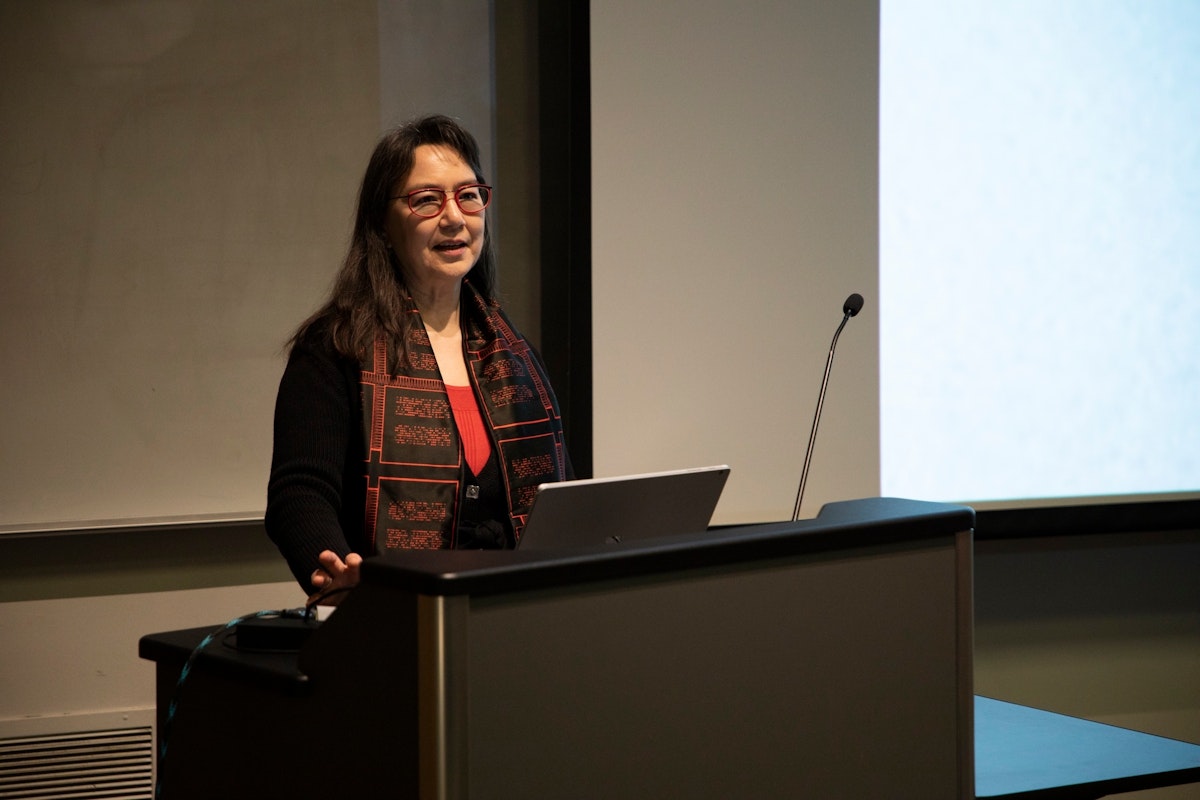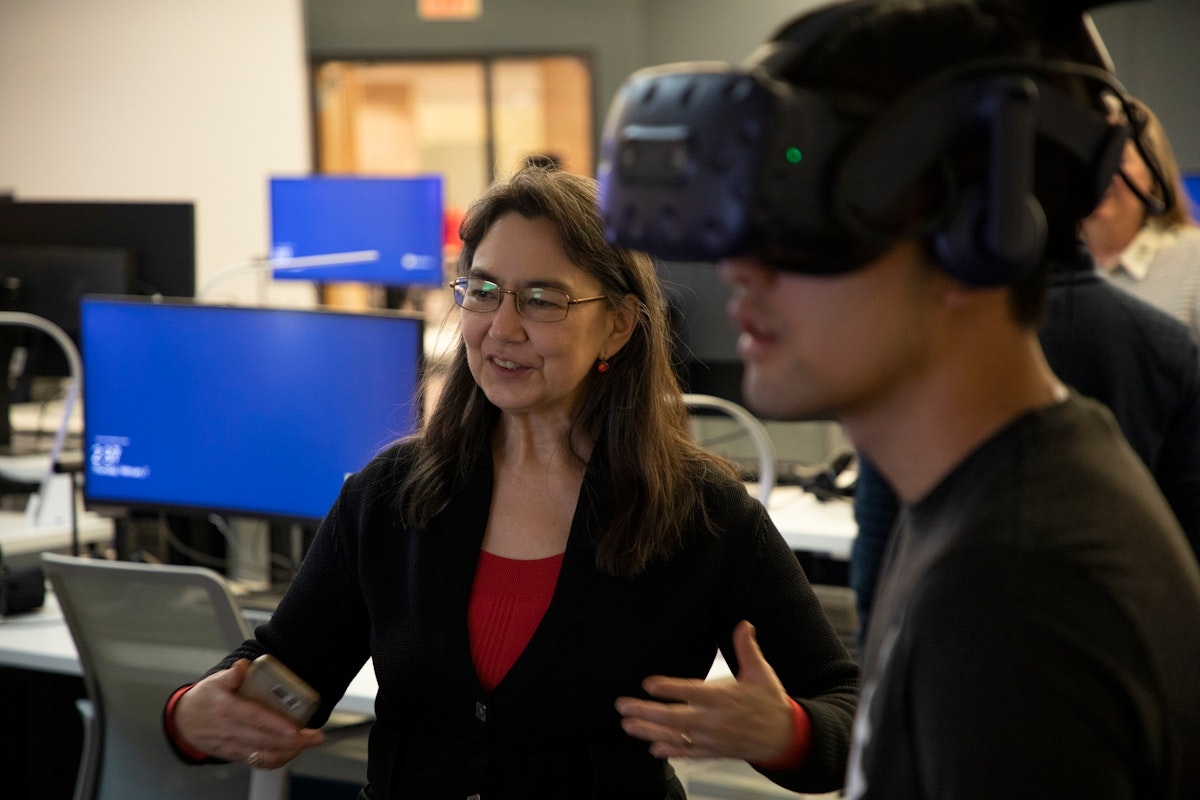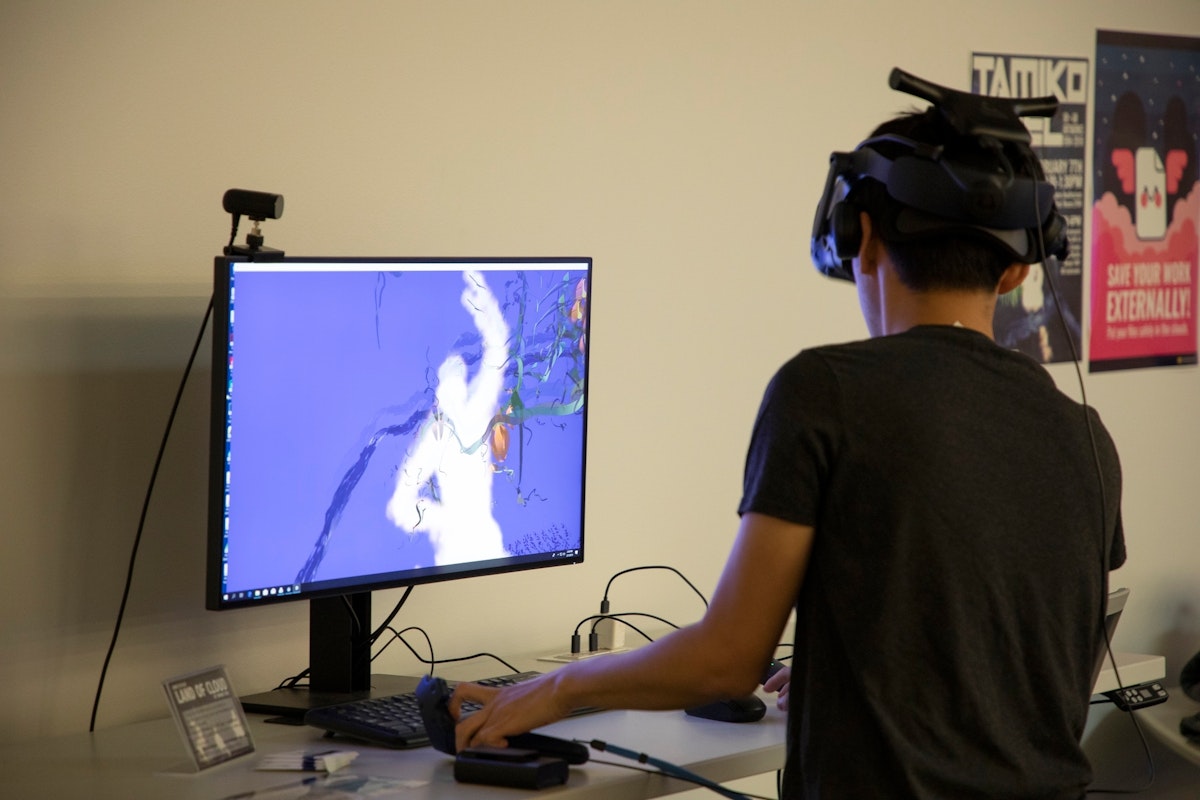Reality Re-envisioned: Tamiko Thiel Visits Stamps
In early February, 2019, the Stamps School hosted Virtual Reality/Augmented Reality artist Tamiko Thiel for a campus visit to give a public talk and demo her VR artwork, Land of Cloud, at the Duderstadt Center.
An internationally recognized media artist who specializes in exploring the interplay of place, space, the body and cultural identity, Theil’s augmented reality installation Unexpected Growth (2018), is on view at the Whitney Museum of American Art as part of the exhibit "Programmed: Rules, Codes, and Choreographies in Art, 1965–2018.”
A model for the value of a multidisciplinary education, Thiel received her B.S. from Stanford University in Product Design Engineering with a focus on human factors design; her M.S. in Mechanical Engineering from MIT; and a Diploma in Applied Graphics from the Munich Academy of Fine Arts.

As part of her visit, Thiel spoke with University of Michigan Engineering student Saadat Zaman (Computer Science ‘22) about her transdisciplinary educational path, her creative work, and about her chosen medium of VR/AR.
Zaman: Where did your desire for intertwining the arts and engineering originally stem from?
Thiel: It is either genetic or environmental, as my father Philip Thiel started out as an engineer before becoming a lecturer at MIT at age 30, teaching naval architecture (ship design). There, he met Gyorgy Kepes, founder of the Center for Advanced Visual Studies at MIT, and two years later graduated with a B.A. in architecture and urban planning a his special student. So when I came to MIT in 1981 as a mechanical engineering grad student, and graduated 2 years later with an MS in Mech E but having taken half my classes in what became the Media Lab, he wasn't surprised and was very supportive.

Do you have a process for how you develop your work? If so, what does it consist of and what excites you most about your creative process?
What excites me the most is the openness of the creative process, and how where it can take you where you didn't expect to go. I am a tinkerer, not a planner. So I start with some sort of image in my head or spatial feeling that I want to achieve, make a first cut, find out that is completely worthless, start all over again, and when it seems absolutely impossible, I know that means that if I persevere I will finally make a breakthrough.
It seems that much of your work has served as social commentary as seen in installations such as “Unexpected Growth” and “Land of Cloud.” Do you believe this comes from a sense of having a role in society as an artist?
I don't think I feel that being an artist means fulfilling a role in society, but I do believe that being an artist gives me a voice I wouldn't have otherwise. So I am always grateful when people are curious enough about what I have to say that they invite me to give a talk.

What surprised you most about your how your audience responded to your work? What is your interaction with your audience?
What surprises me the most — when it happens — is when visitors come out with interpretations that I hadn't thought of, but that are really interesting and seem to be quite valid. It's great when I can learn from my audience! I value art the most when it is a door to more questions rather than a dead end room with a final answer, and I hope that I can provide something of the same to my audience.
What drew you to create art using Virtual Reality and Augmented Reality technology? What benefits do you see in each technology when it comes to presenting your work?

VR and AR are totals works of art in the Wagnerian sense (see Smith, Matthew. "The Total Work of Art: From Bayreuth to Cyberspace.") What artist is not enamoured of a medium in which they can create entire worlds and do whatever they want? If the technology ever solves the lack of the other senses (tactility, smell, taste) I think all artists will create in VR and AR. VR has the advantage that you can create whatever context you want; AR as the advantage that you don't have to create the context, but can simply use an existing one. Both have their merits.